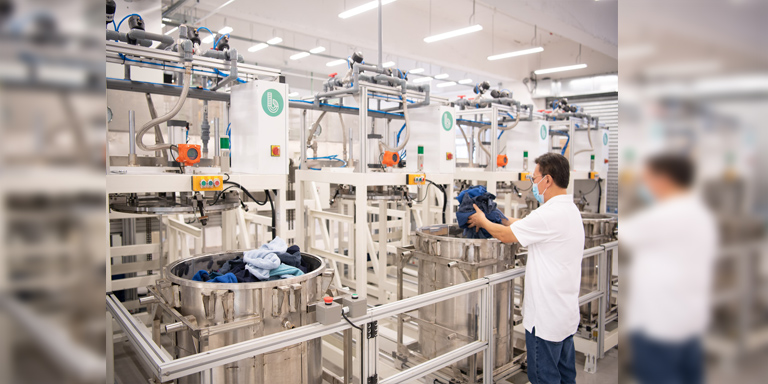
As clothing consumption continues to increase globally, sustainability solutions have been developed to deal with textile waste.
Some eco-conscious designers use textile waste in their collections but such initiatives can only go so far in addressing the sheer volume of waste produced. Hong Kong-based textiles firm Novetex has tackled this challenge by setting up the Billie System, which upcycles textiles otherwise destined for the landfill. “While many other textile recycling processes require high volumes of chemicals and water, the Billie System doesn’t use any water or emit hazardous discharge,” says Novetex Chairman Ronna Chao, who goes on to explain how it works.What inspired Novetex to set up the Billie System?
As part of our commitment to sustainability, we wanted to start where we could make the most impact. Novetex’s origins are in Hong Kong, and we were keen to find a solution to managing the textile waste created in our city. Simultaneously, demand for sustainable fashion has risen in the past decade, and many brands want to introduce more sustainable fibres in their products. It made perfect sense, both commercially and environmentally, to open our upcycling factory in Hong Kong. Tell us about the process of setting up the Billie System.
Novetex started to prioritise sustainability as a commercial decision more than a decade ago. About two years ago, we began investing in research and development and partnered with the Hong Kong Research Institute of Textiles and Apparel (HKRITA) to develop a system that can upcycle the waste from our own manufacturing processes. The Billie System was initially developed to address the textile waste resulting from our own manufacturing processes. We are very happy that what we developed for ourselves is something that can tackle the problem on a larger scale. How does the system upcycle textile waste?
There are six key steps. First, textile waste sanitisation, in which garments are disinfected through an ozone sanitisation system. That is followed by hardware removal, the manual removal of non-fibre objects such as buttons and zippers. The next step is automatic colour sorting during which trimmed fabrics are sorted into nine colour ranges. Colour-sorted swatches are then transferred by an automated guided vehicle for fibre processing, two stages of ultraviolet light sanitisation, and finally, the recycled fibres undergo sliver processing.
Which companies are you working with to upcycle their waste?
We often look at textile waste as clothing, but there is a large proportion of waste from industrial textiles, too. One of the companies we’re working with is the Hong Kong and Shanghai Hotels, which has piloted upcycling their bed linens with us; one of our branded apparel customers will be debuting a campaign towards the end of the year. We’d be delighted to partner with more companies, from luxury brands to NGOs [non-governmental organisations], to grow our scale of impact. What will happen to the upcycled waste?
Ideally, we’d like to work with brands in a closed-loop economy with support from the Novetex Zhuhai facilities, where brands would use their own textile waste to create new yarns, fabrics and even clothing lines. We are also communicating with different NGOs and other industries in collecting different kinds of textile waste, such as old home textiles and uniforms. For upcycled fibres sourced from the latter, we are working towards building up stock where clients can purchase upcycled yarn from the Billie System. Do you feel hopeful about the future of sustainable fashion?
I do. A growing number of consumers are expressing a desire for more sustainable products and processes and in turn, brands are responding to that. The next generation gives me hope because they are far more aware of, and concerned about, sustainability issues and other problems that affect our planet. Do you hope similar initiatives to the Billie System will be established in Hong Kong or elsewhere?
Definitely. The Billie System is patented, but that’s not to say that it can’t be recreated, and we are continuing to explore how we can scale our operation and make a bigger impact. A wide range of solutions is needed to address our issues at hand, so different initiatives should work towards the common goal of assisting a circular economy in the textile sector.What feedback have you received on the Billie System so far?
We’ve had a lot of positive comments regarding the quality of our yarn. People are quite surprised to find the hand-feel of garments made with upcycled yarn is comparable to those made of virgin fibres.
What are your long-term ambitions for the Billie System and how will you go about implementing those?
Expanding the Billie’s capacity is part of our vision. For now, the system’s three production lines can process up to three tonnes of textile waste every day, but we continue to study how we can add more production lines or recreate the Billie in another location. We also seek to promote a wider recycling movement, and support our clients in the practice of a circular economy.Related links
Novetex
The Billie Upcycling


